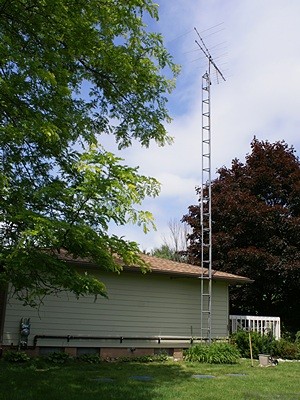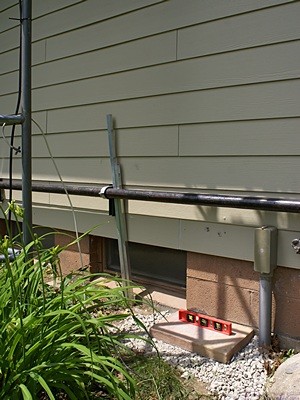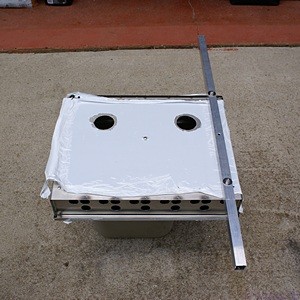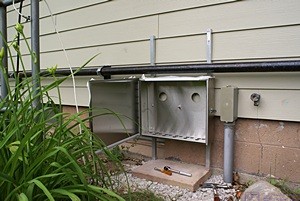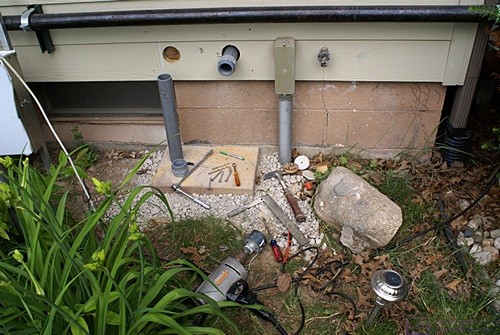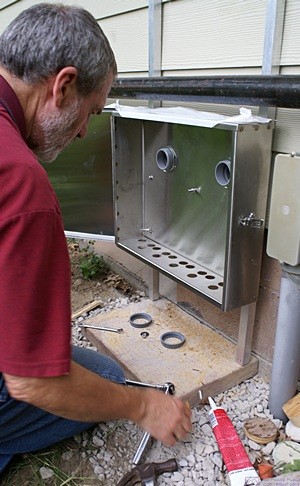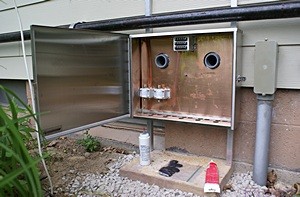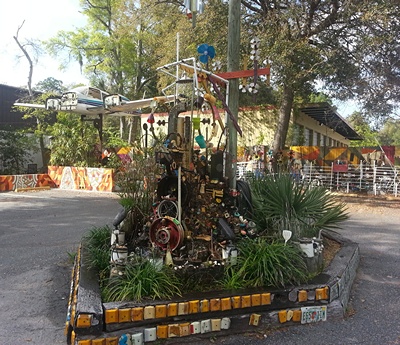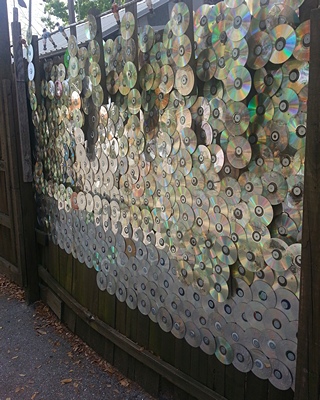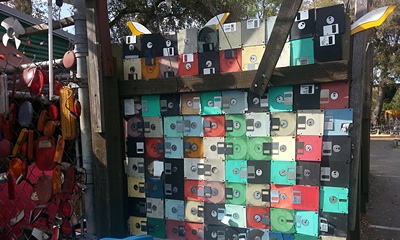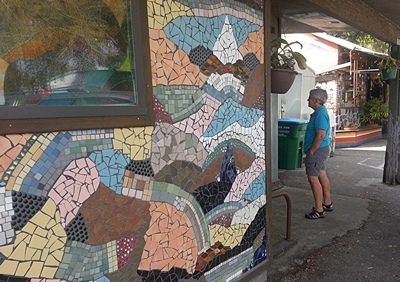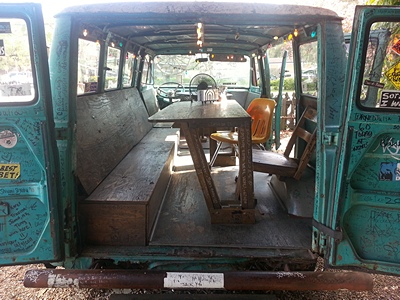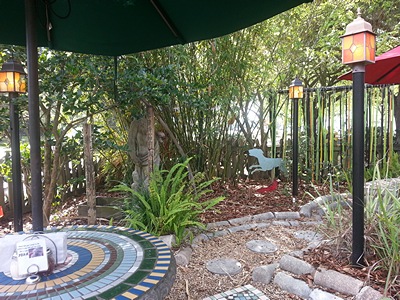For a change of pace we had granola with vegan yogurt for breakfast. I made seven cups of the Cafe Europe / Columbian decaf blend but Linda only had one mug as she was meeting Diane at Kensington Metropark at 9 AM to walk. After she left I gathered up the laundry, sorted it, and started the first load. I then turned my attention to the bus.
My first task was to cut one of the 8″x8″ sheets of #80 sandpaper in half, put it on the orbital pad sander, and go over all of the Universal Patch and Skimcoat (UPS) that I applied yesterday. The 80 grit worked well and I only needed the one half sheet. I swept the floor clean of loose debris and then assembled my tools and materials to patch a few gouges I missed yesterday and then skimcoat the entire portion of the floor that used to have ceramic tile on it. I mixed 24 ounces (by volume) with 12 ounces of water (by volume), half as much UPS as I did yesterday. I tried to work more quickly and got most of it applied. I cleaned up my tools and let them dry while the compound cured. That also gave me an opportunity to move laundry from the washer to the dryer and start another load in the washing machine.
I had a call from Chuck so I took a break to chat with him. He and Barbara spent the weekend racing at the old Air Force base in Oscoda, Michigan. Their bus and race car both ran well and he turned in some very good times. He had installed a new turbo boost gauge in the bus and based on my experience had selected a 0 to 15, PSI VDO unit. Apparently 15 PSI is not high enough for his engine. I have seen the boost on my gauge, which is a 0 to 30 PSI model, go as high as 17, but not often. For most of our trip to Arizona and back this past winter it did not go over 15 PSI.
The only issue they have with their coach at the moment is their old Amana residential refrigerator. The freezer is apparently not keeping things as cold as it should and the ice maker is not working. They use a lot of ice and generally have the freezer stocked, so those are problems. They bought a bag of ice for the weekend but it appeared to get warm enough to develop surface moisture and then refroze into large chunks, inconvenient at best. I think they have decided to replace it and want to do so before they leave for the winter and while they still have the shop and the forklift.
Chuck is also going to contact the glass installer and see if he would be willing to install bus windshields. Both of his lower windshields need to be replaced as do both of ours. We have five replacements at his shop, two for him and three for me. I also have new gaskets but he needs to get two sets. We discussed late September as the best time for me and he will see if the windshield guy will do all four of them on the same day.
I mixed the remaining USP, about 12 ounces (by volume) with 6 ounces of water (by volume) and finished the skimcoating of the bus floor. I used the last little bit of compound to patch some screw holes and small gouges in the living room floor where carpet had been installed. There may be a few more but instead of opening another bag of UPS I will probably return it and buy a quart of the premixed compound. I then cleaned up my tools again and left them in the sun to dry.
Linda got home about this time. It was just after noon, so we had a light lunch of vegan deli slices with lettuce, onion, and Daiya non-dairy cheese, on thin buns. A pluot provided a nice, sweet finish to lunch.
We measured for wallpaper the other day so I took the notes and created an Excel spreadsheet to figure out how many rolls of wallpaper to order. While I did that Linda worked on cleaning and reconditioning drawer fronts with Touch of Oranges and Touch of Beeswax. After examining the wallpaper in the bathroom (of the bus) I think we need to replace it too. We took a few minutes to get those measurements and I added them to the spreadsheet.
The wallpaper we have selected is the Lamar (#699-3377R) from the Just Textures collection of Sellars and Josephson. It is an off-white color with a small texture pattern designed for reverse hang, random match installation. It is only sold in 2-roll bolts 27″ wide and 4.5 yards long. We will need more than six rolls to replace all of the wallpaper so we will have to order eight rolls even though we may defer doing part of the hallway and the bathroom for a while. Fortunately it is not too expensive (as wallpapers go) and is scrubable, which was one of our requirements for use in the bus. Linda will return the sample books to Delux Drapery and Shade Company in Ann Arbor on Wednesday morning and place the order.
Linda reheated the leftover fajita veggies from last night and fixed some white rice to go with them. We had fresh strawberries and a little Coconut Bliss non-dairy ice cream for dessert. Coconut Bliss ice creams are not too coconuty, and are appropriately named. They are as good as I remember Hagan-Daas being.
I took a little time to add lines to my floor tile layout drawing showing the location of the underlayment sheets. It looks like I may need at least eight sheets. I have four sheets in the garage and will install those before buying more. I spent the rest of the evening working on the article for Bus Conversion Magazine about Larry and Carol Hall’s GM4106 bus conversion and finished it around 10 PM. I spent another 1.5 hours catching up on e-mail and checking in on the status of Technomadia’s bus renovation project at MasterTech in Elkhart, Indiana. The weather has turned cool and should be perfect for working on the bus tomorrow. We need to have long, productive days, so I had a snack and got to bed at midnight, played a few games, and went to sleep.
